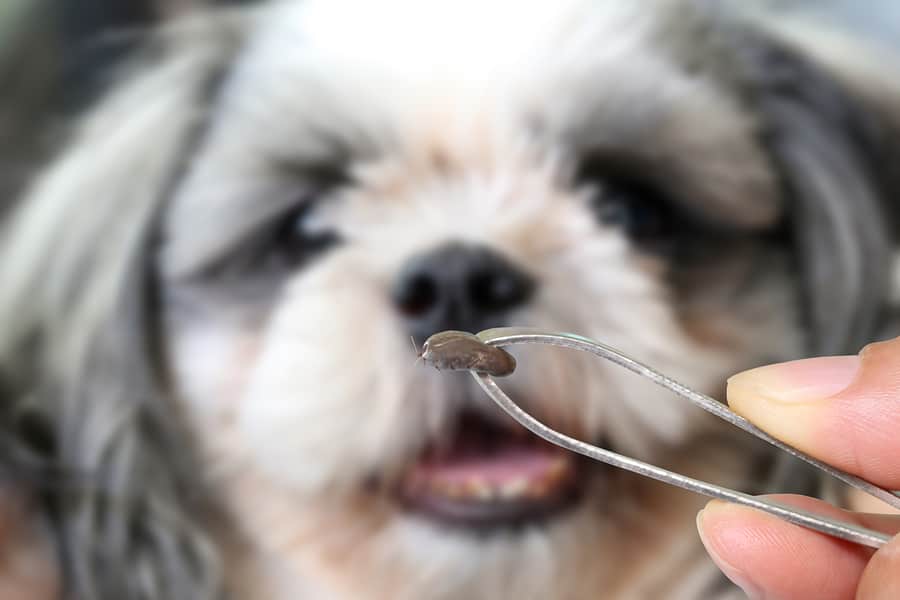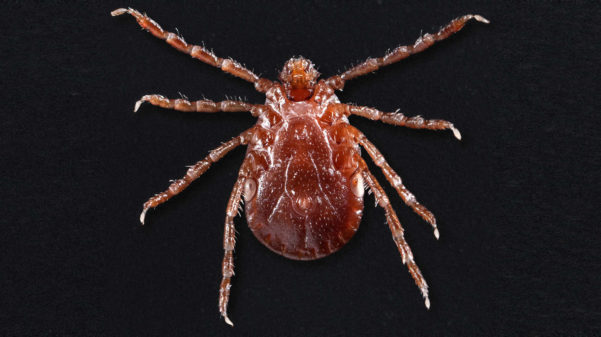READY TO GET STARTED?
REQUEST A FREE ESTIMATE
Fill out the form below or call (888) 466-7849 for a free, no-obligation estimate.

Fleas and ticks are small, annoying, and can be a major health risk to both your family and pets. These parasites can transfer diseases such as Lyme disease, anaplasmosis, and ehrlichiosis. While it can be difficult to prevent these pests, it is possible. We break down our tips and tricks on keeping these pests away!
Vacuum Frequently
Fleas like to live in carpets, rugs, and pet bedding. To keep these pests from infesting, consider vacuuming at least once a week and even more often if you spot fleas. Fleas also avoid high traffic areas and will live in harder-to-reach spots such as baseboards, under furniture, under cushions, and anywhere your pets like to sleep too.
Check Your Pets
Pets are highly susceptible to flea and tick exposure. Both fleas and ticks will jump onto pet’s skins, easily making their way inside your home. Perform tick and flea checks on your pets regularly. Make sure that you’re checking all over your pet’s skin, in ears, and under their armpits. If you find a tick or flea, remove them immediately and notify your veterinarian to provide the best treatment plan for your pets.
Stop Attracting Wildlife
Opossums, raccoons, skunks, coyotes, and even feral cats will bring fleas and ticks into your yard. It’s essential to keep this wildlife from entering your property to help avoid a flea and tick infestation. Check around your property for any items that might be attracting these animals, such as pet bowls, water bowls, opened trash cans, and even bird feeders. Check around your house for any open holes in gaps that lead to your garage, sheds, decks, and crawlspaces.
It can be difficult to prevent fleas and ticks on your own. If you suspect that you have a flea and tick infestation, consider calling your local professional pest control company to inspect your property and provide you with the best plan of action.

The weather is warming up, many of us are starting to spend time outside with our friends, family, and pets. Enjoying the outdoors has its benefits but also the disadvantage of coming across nuisance pests! Two common spring pests that can be harmful to both humans and pets are ticks and fleas. These insects will typically latch onto us or our animals, making their way inside homes, bringing the risk of infestation.
Fleas
Fleas tend to be dark red or brown, with their size varying between ½” to 1/6” in length. Fleas have a flat body, two antennae, and six legs. These pests will bite both humans and pets such as dogs and cats. Fleas have the incredible ability to jump to great heights, sometimes up to eight feet high! Jumping allows them to hitchhike into homes while hidden in pet fur. Dogs and cats will often get infested with fleas through contact with other animals or spending time outdoors. Once fleas have latched onto an animal host, they tend to stay there and then will easily transfer over to furniture or other animals. Fleas can be a health risk as their saliva is known to cause anemia, dermatitis, and facilitate and transfer tapeworms.
Ticks
There are two categories when identifying ticks: soft ticks and hard ticks. The soft tick will feed on bats and birds while the hard tick will feed on humans, pets, and nuisance wildlife. People and animals are likely to encounter ticks during the warmer months. Ticks can pose several health threats to humans and animals as they can transmit serious diseases such as Lyme disease and “tick paralysis.” Some tick species, such as the American Dog Tick, prefer to attach and feed on domestic dogs, which in turn allows them to sneak into our homes. When ticks feed, they can grow up to four times in size when engorged with blood, making them much easier to spot.
Controlling fleas and ticks can sometimes feel like an impossible task, especially if you have animals. If you suspect that you have a flea and tick problem, consider calling your local professional pest company who can thoroughly inspect your entire property and provide you with a treatment and prevention plan.

For the first time in fifty years, the U.S. has its first known invasive tick.
The longhorned tick, first discovered in November 2017, has been found in New York, Pennsylvania, Maryland, Virginia, West Virginia, North Carolina, and Arkansas. Professionals have had unsuccessful attempts to exterminate this particular species, leading it to be classified as an invasive species.
Normally an animal-attracted pest, the longhorned tick has been known to carry and transmit diseases like Lyme, spotted fever, and Severe Fever with Thrombocytopenia (SFTS). SFTS symptoms include fever, vomiting, multiple organ failure, along with many other symptoms. Fortunately, of the ticks tested here in the U.S., no human diseases have been detected.
As always, use the normal precautions towards tick exposure:
Continuing to follow these precautions will help to prevent tick exposure for you and your family members.
How Much Does a Termite Inspection Cost?
Pest Control for Basements and Attics
Wildlife Control: What Threat do Rodents Pose to Humans?
Exterminating: Rain and the Bugs it Brings?
Termite Treatment: Termites vs Flying Ants